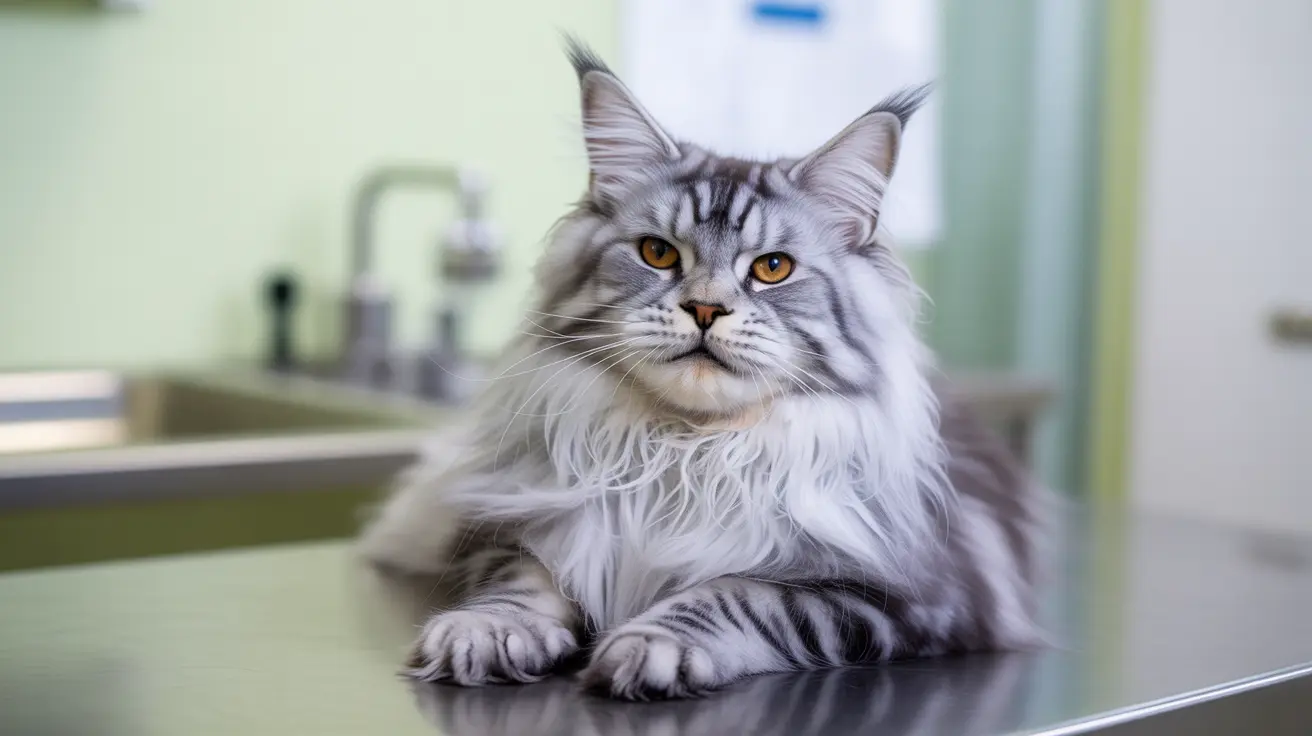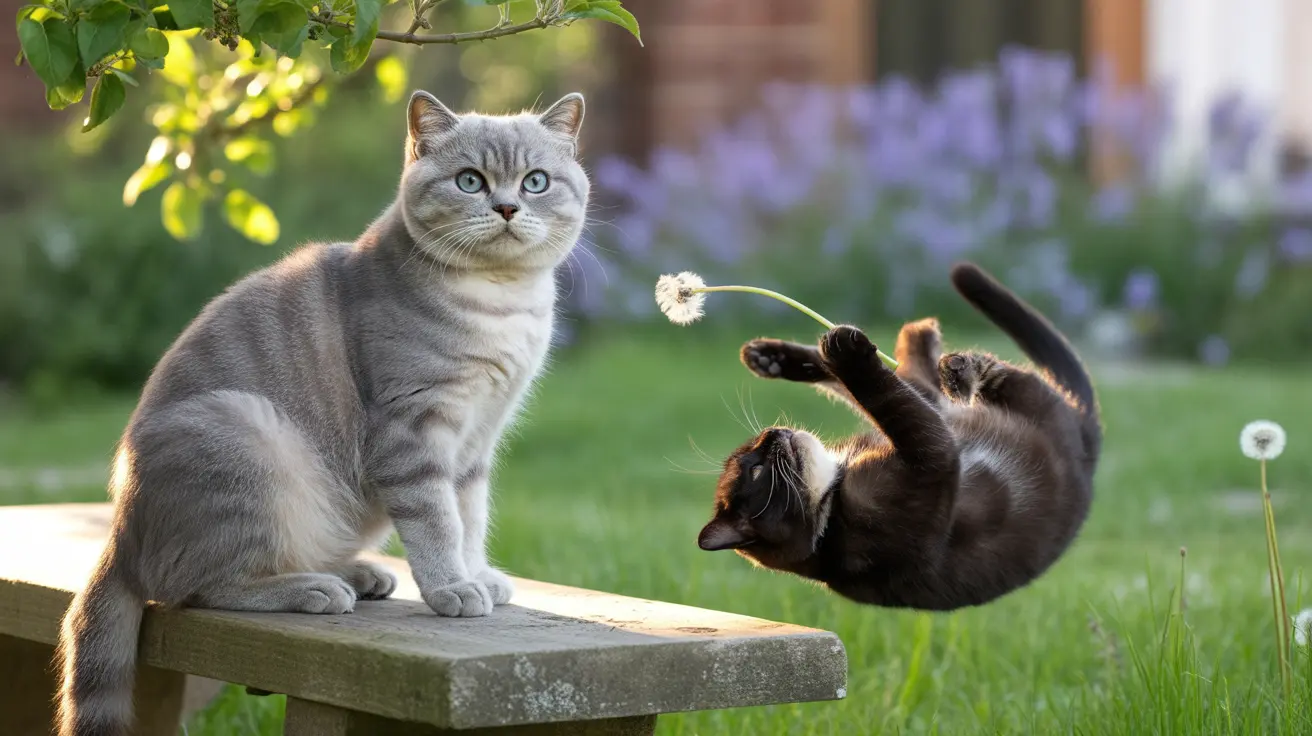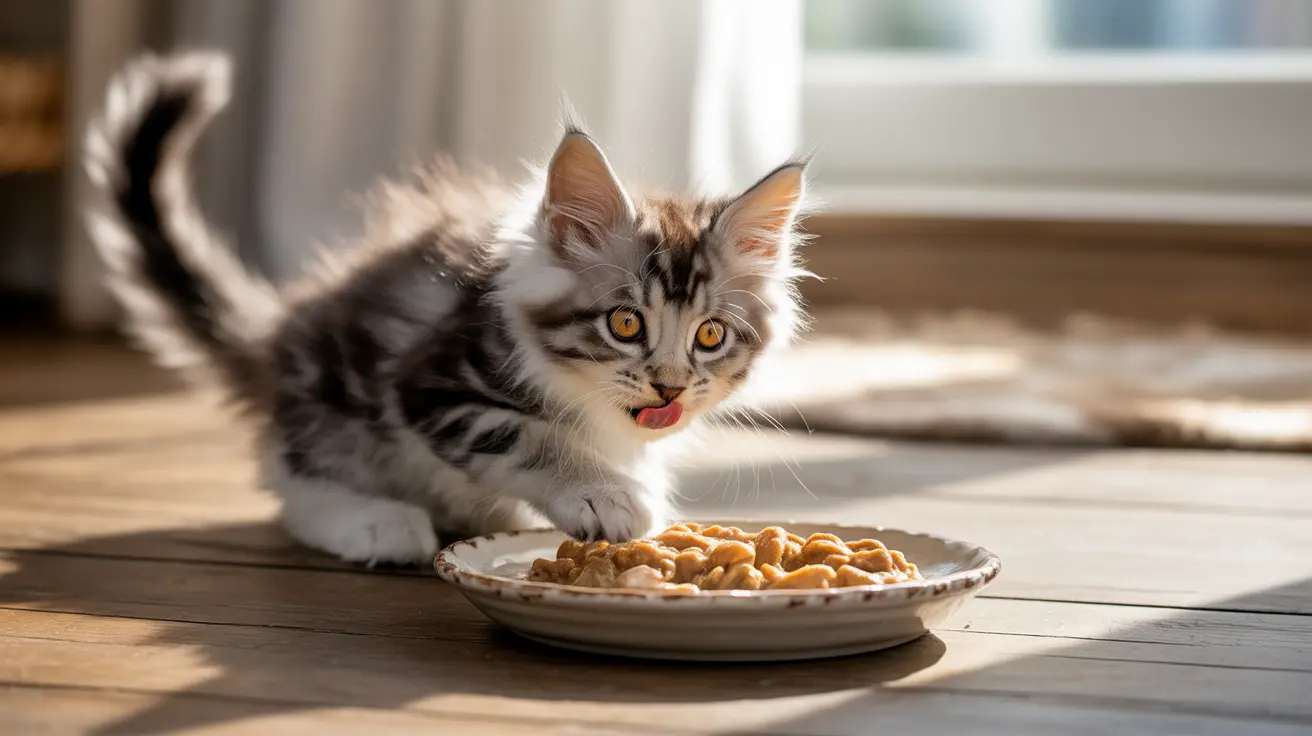Common Eye Conditions in Cats and Their Treatment: A Complete Owner's Guide
Your cat's eyes are windows to their health, serving as early indicators of both localized problems and systemic diseases. As a cat owner, understanding common eye conditions in cats and their treatment options is crucial for maintaining your feline companion's vision and overall well-being. Cats have highly sensitive but vulnerable eyes that can be affected by minor injuries, infections, and underlying health conditions like diabetes, kidney disease, or hypertension.
This comprehensive guide will help you recognize the warning signs of feline eye problems, understand when to seek veterinary care, and learn about safe first aid measures you can take at home. Whether you're a new cat owner or have years of experience, knowing how to identify and respond to eye conditions can make the difference between preserving your cat's vision and facing permanent damage.
Understanding Feline Eye Anatomy and Vulnerability
Cats rely heavily on their vision for hunting, navigation, and daily activities, making their eye health particularly important. The feline eye consists of several delicate structures including the cornea, conjunctiva, iris, lens, and retina, each susceptible to different conditions. The conjunctiva, the thin membrane surrounding the eye, is particularly prone to inflammation and infection.
What makes cats' eyes especially vulnerable is their exposure to environmental irritants, potential trauma from fights or accidents, and their susceptibility to viral infections that can cause recurring eye problems. Additionally, certain breeds like Persians and Siamese cats have genetic predispositions to specific eye conditions, requiring extra vigilance from their owners.
Recognizing Common Signs of Eye Problems in Cats
Early detection of eye problems significantly improves treatment outcomes. Cat owners should perform daily visual inspections of their pet's eyes without direct staring, which cats find threatening. Key warning signs that indicate the need for veterinary attention include persistent squinting, which signals eye pain or inflammation, and should prompt veterinary consultation if it continues beyond a few hours.
Other critical symptoms to watch for include redness and swelling around the eye area, unusual discharge that appears thick, creamy, or widespread rather than the normal minimal brownish discharge near the nose, and cloudiness on the cornea which may indicate scratches or ulcers. Changes in pupil size, especially when pupils remain dilated, can signal serious conditions like retinal problems or high blood pressure.
The visibility of the third eyelid is another important indicator. This membrane is normally hidden except when cats are sleepy, and persistent visibility when the cat is alert may indicate Horner's syndrome or other neurological issues. Additionally, behavioral changes such as light avoidance, pawing at the eyes, or signs of vision impairment like bumping into objects warrant immediate veterinary evaluation.
Viral Eye Infections: The Most Common Culprits
Viral eye infections represent the most frequent category of common eye conditions in cats and their treatment often requires long-term management rather than simple cures. Feline herpesvirus is particularly prevalent, infecting most cats early in life and establishing a lifelong latent infection that can flare up periodically, especially during times of stress or illness.
These viral infections typically cause recurring episodes of eye redness, excessive tearing, squinting, and sometimes discharge. The herpesvirus can also lead to more serious complications like corneal sequestrum, particularly in Persian and Himalayan breeds, where dead corneal tissue appears as distinctive black or brown spots that may require surgical removal.
Treatment for viral eye infections focuses on managing symptoms and preventing secondary bacterial infections. Veterinarians may prescribe antiviral medications, antibiotics for bacterial complications, and oral L-lysine supplementation to support the immune system. Cats with a history of viral eye infections should be evaluated by a veterinarian within a few days of symptom onset, while those without previous episodes require examination within 24 hours.
Conjunctivitis: More Than Just Pink Eye
Conjunctivitis, commonly called pink eye, involves inflammation of the tissues surrounding the eye and represents a symptom rather than a specific disease. This condition can have numerous causes, making diagnosis challenging and requiring professional veterinary evaluation. The inflammation can become so severe that swollen conjunctiva obscures the eye entirely.
Causes of feline conjunctivitis range from bacterial infections involving organisms like Chlamydia and Mycoplasma to viral infections, particularly herpesvirus. Environmental factors such as allergens, irritants, and foreign bodies can also trigger conjunctival inflammation. In some cases, conjunctivitis may be secondary to other eye conditions or systemic diseases.
Anti-inflammatory medications may help reduce swelling temporarily, but determining and treating the underlying cause is essential for resolution. Cats with conjunctivitis should receive veterinary evaluation within 24 hours, as the condition can worsen rapidly and may indicate more serious underlying problems.
Corneal Ulcers: When the Eye's Surface Is Damaged
Corneal ulcers represent injuries to the eye's clear outer surface and constitute serious conditions requiring immediate attention. These ulcers typically present with characteristic symptoms including squinting, discomfort in bright light, redness, and sometimes discharge. The pain associated with corneal ulcers often causes cats to keep the affected eye partially or completely closed.
Various factors can cause corneal ulcers, including trauma from fights, scratches from foreign objects, chemical irritants, or complications from other eye conditions like entropion, where the eyelid rolls inward causing constant irritation. Dry eye conditions can also predispose cats to ulcer formation by reducing the protective tear film.
Rapid veterinary examination is crucial because corneal ulcers can deteriorate quickly, especially if secondary bacterial infections develop. Deep ulcers may perforate the eye, leading to permanent vision loss or requiring surgical intervention. Treatment typically involves antibiotic drops, pain management, and sometimes surgical procedures depending on the ulcer's severity and depth.
Systemic Diseases Affecting Cat Eyes
Many common eye conditions in cats and their treatment are complicated by underlying systemic diseases that affect overall health. Retinal problems frequently occur secondary to conditions causing high blood pressure, such as hyperthyroidism and kidney disease. When blood pressure becomes elevated, it can rupture retinal blood vessels, potentially causing retinal detachment and sudden blindness.
Diabetes mellitus can contribute to cataract formation and increase susceptibility to eye infections. Feline leukemia virus (FeLV), feline immunodeficiency virus (FIV), and feline infectious peritonitis (FIP) can all cause uveitis, which is inflammation inside the front portion of the eye that may lead to secondary glaucoma and cataracts if left untreated.
Cats experiencing sudden blindness with dilated pupils require immediate veterinary intervention, as prompt treatment may help preserve some vision. Managing these systemic conditions through appropriate medications, diet, and monitoring is essential for maintaining eye health and preventing further complications.
Breed-Specific Eye Conditions
Certain cat breeds, particularly Persians and Siamese cats, have genetic predispositions to specific eye problems that owners should monitor closely. Persian cats and related flat-faced breeds are prone to corneal sequestrum, impaired tear drainage due to their facial structure, and increased risk of corneal injuries due to prominent eyes.
These breeds may also experience entropion, where the eyelid rolls inward, causing constant irritation and potential ulcer formation. The shortened tear ducts in flat-faced breeds can lead to chronic tearing and increased risk of bacterial overgrowth around the eyes. Some Persian lines are also predisposed to congenital cataracts and glaucoma.
Siamese cats may develop specific genetic eye conditions and are sometimes prone to certain types of eye tumors. Owners of these breeds should maintain particularly vigilant eye monitoring and consider genetic counseling when planning breeding programs to reduce the incidence of hereditary eye problems.
Emergency First Aid for Cat Eye Injuries
While professional veterinary care is always necessary for eye injuries, knowing basic first aid can help stabilize your cat's condition during transport to the veterinary clinic. For chemical exposure, especially acids, immediate and prolonged flushing with clean water or saline solution is critical and should continue for at least 15-20 minutes before seeking veterinary care.
For general eye irritation or minor foreign matter, gentle flushing with sterile saline solution can provide temporary relief. However, avoid attempting to remove visible foreign objects, as this may cause additional damage. Instead, prevent your cat from pawing at the affected eye by using an Elizabethan collar if available.
Keep your cat in a dimly lit, quiet environment during transport to reduce light sensitivity and stress. Never apply human eye medications or home remedies, as these can worsen the condition or interfere with veterinary diagnosis and treatment. Any eye injury from cat fights requires immediate professional attention due to the high risk of infection from bacterial contamination.
Professional Diagnosis and Treatment Options
Veterinary diagnosis of eye conditions often involves multiple approaches, starting with a thorough physical examination and detailed history of symptoms. Your veterinarian may use specialized equipment like ophthalmoscopes to examine internal eye structures and fluorescein staining to detect corneal ulcers or scratches.
Advanced diagnostic procedures may include tonometry to measure eye pressure for glaucoma detection, bacterial culture and sensitivity testing for persistent infections, and blood tests to identify underlying systemic diseases. In complex cases, referral to a veterinary ophthalmologist may be necessary for specialized procedures or treatment of conditions like complicated cataracts or retinal diseases.
Treatment options vary widely depending on the specific condition but commonly include topical medications such as antibiotic drops for bacterial infections, anti-inflammatory drugs for swelling and pain, and antiviral medications for herpesvirus infections. Some conditions may require oral medications, surgical interventions, or long-term management protocols involving regular monitoring and medication adjustments.
Prevention and Long-term Eye Health Management
Preventing eye problems involves multiple strategies, starting with regular veterinary checkups that include comprehensive eye examinations. Maintaining your cat indoors or in secured outdoor enclosures reduces exposure to trauma, infectious agents, and environmental irritants that can trigger eye problems.
Proper nutrition supports overall eye health, and ensuring your cat receives a balanced diet with appropriate vitamins and antioxidants can help maintain healthy vision. Managing underlying health conditions like diabetes, hypertension, and hyperthyroidism through regular monitoring and medication compliance is crucial for preventing secondary eye complications.
For cats with chronic conditions like herpesvirus infections, long-term management may involve stress reduction, regular L-lysine supplementation, and having rescue medications readily available for flare-ups. Owners should establish relationships with both their regular veterinarian and potentially a veterinary ophthalmologist for ongoing care of complex eye conditions.
When to Seek Emergency Care
Certain symptoms require immediate emergency veterinary attention and cannot wait for regular appointment scheduling. Sudden onset blindness, especially when accompanied by dilated pupils that don't respond to light, indicates potential retinal detachment or acute glaucoma requiring emergency intervention.
Severe trauma to the eye area, including obvious penetrating injuries, chemical burns, or suspected foreign object penetration, necessitates immediate professional care. Any eye that appears cloudy, has visible blood inside the anterior chamber, or shows signs of possible rupture requires emergency evaluation.
Additionally, cats showing signs of severe pain such as constant squinting, pawing at the eye, or extreme light sensitivity, combined with significant swelling or discharge, should receive immediate attention. Early intervention in these emergency situations can often mean the difference between preserving vision and permanent blindness.
Frequently Asked Questions
- What are the most common signs that my cat has an eye problem?
The most common signs include persistent squinting, redness around the eye area, unusual discharge that appears thick or creamy, cloudiness on the eye surface, and changes in pupil size. You may also notice your cat pawing at their eyes, avoiding bright lights, or showing behavioral changes like bumping into objects. - How quickly should I seek veterinary care for my cat's eye problems?
Cats with no previous history of eye problems should be seen within 24 hours of symptom onset. However, cats with a history of viral eye infections may be evaluated within a few days if symptoms are mild and familiar. Emergency symptoms like sudden blindness, severe trauma, or chemical exposure require immediate attention. - Can I treat my cat's eye infection at home?
While gentle saline flushing can provide temporary relief for minor irritation, eye infections require professional diagnosis and prescription medications. Using human eye drops or over-the-counter treatments can worsen the condition or interfere with proper veterinary treatment. Always consult your veterinarian before attempting home treatment. - Are certain cat breeds more prone to eye problems?
Yes, Persian and Himalayan cats are particularly susceptible to corneal sequestrum, impaired tear drainage, and structural problems like entropion due to their facial conformation. Siamese cats may also have genetic predispositions to certain eye conditions. Owners of these breeds should maintain extra vigilance for eye problems. - What should I do if my cat gets something in their eye?
For minor irritants, gentle flushing with sterile saline solution may help. However, never attempt to remove visible foreign objects, as this can cause additional damage. Instead, prevent your cat from pawning at the eye and seek immediate veterinary care, especially for objects like grass awns or debris from fights. - How can I prevent eye problems in my cat?
Regular veterinary checkups, keeping your cat indoors or in secure outdoor areas, maintaining proper nutrition, and managing underlying health conditions like diabetes and hypertension all help prevent eye problems. For cats with chronic conditions like herpesvirus, stress reduction and L-lysine supplementation may help prevent flare-ups. - What is the difference between conjunctivitis and more serious eye conditions?
Conjunctivitis typically involves redness and swelling of the tissues around the eye, while more serious conditions like corneal ulcers cause severe pain, squinting, and may involve cloudiness of the eye surface. Retinal problems can cause sudden blindness with dilated pupils. Any persistent or severe symptoms require veterinary evaluation for proper diagnosis.
Conclusion
Understanding common eye conditions in cats and their treatment empowers you to provide the best possible care for your feline companion. Early recognition of symptoms, prompt veterinary attention, and appropriate follow-up care can preserve your cat's vision and prevent minor problems from becoming serious complications. Remember that any change in your cat's eyes warrants professional evaluation, as what appears minor may indicate underlying systemic disease or developing complications.
By maintaining regular veterinary checkups, monitoring your cat's eyes daily, and knowing when to seek emergency care, you can help ensure your cat maintains healthy vision throughout their life. With proper understanding and proactive care, most eye conditions in cats can be successfully managed, allowing your pet to continue enjoying a high quality of life with clear, comfortable vision.






